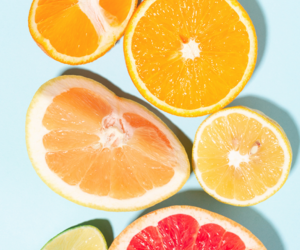By Steve Johnson, Chairman of the Florida Citrus Commission
For the past year, the Department of Citrus has tracked the pandemic’s impact on the way American’s shop and consume Florida Orange Juice. Through both Nielsen Retail Sales reports and survey data, we witnessed sales soar in the initial weeks as consumers stockpiled their pantries with kitchen staples and sought out healthy foods and beverages that provide immune support. Americans continued to purchase orange juice at high levels throughout the year citing vitamin C and immune support as drivers.
As we hit the one-year mark of this transformative event, we can expect that some of these behaviors will have lasting impacts and we’ll work hard to ensure they do. However, we know that we will not see the same drastic year-over-year sales growth as experienced in the past 12 months. That’s why, starting today, we are providing additional data with each Nielsen Retail Sales report in order to accurately portray sales in a pre- and post-pandemic world.
Today’s report, which covers the 4-week period ending Feb. 20, 2021, is likely the final report in which we can compare year-over-year sales, which remain 10.8 percent above 2020 levels for total OJ, without capturing consumer awareness during the pandemic. Going forward, it will be extremely important to examine 2019, 2020 and 2021 sales data together to see the true impact these changes in consumer behavior have on our market. By looking across multiple years of data we will be able to see shopping patterns evolve through pre- and post-pandemic phases. The ultimate goal is to see that our volume sales this year continue to outpace the sales volumes of 2019.

It is also worthwhile to note that OJ sales for this period tracked above 2017 sales volumes by 2.48 percent and above 2018 sales volumes by 3.13 percent.
Additionally, through insights gathered by the FDOC’s OJ Tracker survey, we are starting to see a shift in the reason behind why consumers say they purchased orange juice amid concerns over the pandemic. Consumers who indicated that they purchased OJ due to COVID-19 concerns are increasingly reporting that they purchased more due to a request for OJ by their families or children who have likely grown accustomed to drinking it as part of their daily routine. The percentage reporting they purchased OJ due to its health benefits also continues to increase. Meanwhile, a leading reason for purchasing less orange juice amid COVID-19 concerns continues to be due to it being unavailable or out of stock.
On the e-commerce side, we continue to see positive results. Since July, the e-commerce programs have reached 281 million impressions and delivered $12.8 million in attributable sales of 100% orange juice with a Return On Ad Spend (ROAS) of $8.44.
I’ll close with this. Orange juice and grapefruit juice represented one of the highest performing products in the beverage category throughout the pandemic. This is positive news because we understand the momentum behind the sales increase throughout 2020 had to do with consumer awareness. But it should also serve as a reminder to us all: we must do the work to support this momentum in the market. Not only do we need strong marketing programs, but we also need to increase replanting, decrease the cost of production, and improve yields in order to continue to supply Florida Orange Juice in the years to come.
Originally published in the Florida Citrus Mutual Triangle
